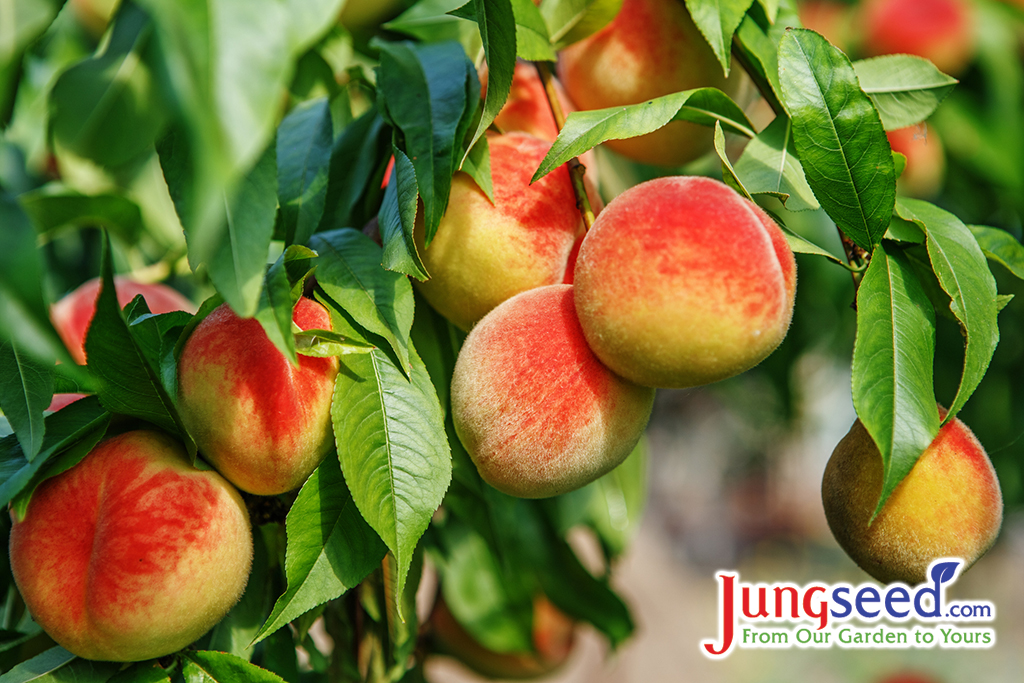
Fruit (& nut) producing trees and shrubs are an exciting thing to plan for, and then care for, so when they fail to produce according to our expectations, it can be frustrating and of course disheartening. Fruit trees will grow very similarly to other ornamental plants. However, when it comes to actually bearing fruit, fruit and nut trees and fruiting shrubs will require more time, attention, and specific care regimens to perform well, in order for them to produce to our gardening expectations.
How Long Does It Take For Trees To Produce Fruit?
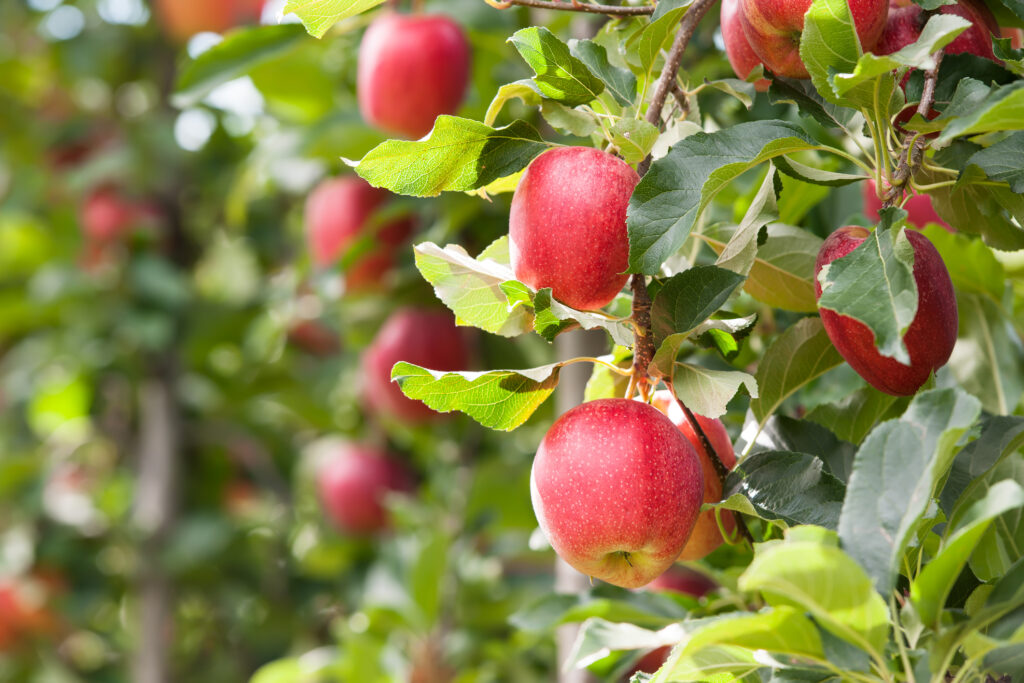
The first basic truth to know is that all fruit trees must grow to a specific maturity before they are even able to bear fruit. Different varieties reach their fruiting age at different times and the type of rootstocks trees are grafted onto have a direct and logical correlation for how old a tree needs to be to bear fruit. There should be no mistake, planting fruit-bearing trees or shrubs is a long-term investment, not a speedy return on your time and effort investment.
Apple Trees – Standard, Dwarf, & Semi-Dwarf
Take apples for example; full-sized trees or “Standards” will generally take 6 to 10 years to reach their mature age to bear. Trees on semi-dwarf rootstock will typically produce in about 4 to 5 years from planting and dwarf trees will bear in about 2 to 3 years from planting. This critical piece of information should be balanced with how patient a gardener you are. How long do you want to wait for fruit and how much fruit do you want? The larger the tree the more fruit it can eventually produce. A dwarf-sized tree will produce about ¼ to ⅓ that of a Standard-sized tree. Dwarf trees will produce in a shorter amount of time but require staking until mature and produce less fruit for essentially the same amount of effort. Everything is a tradeoff.
Why Are My Mature Fruit Trees Not Producing?
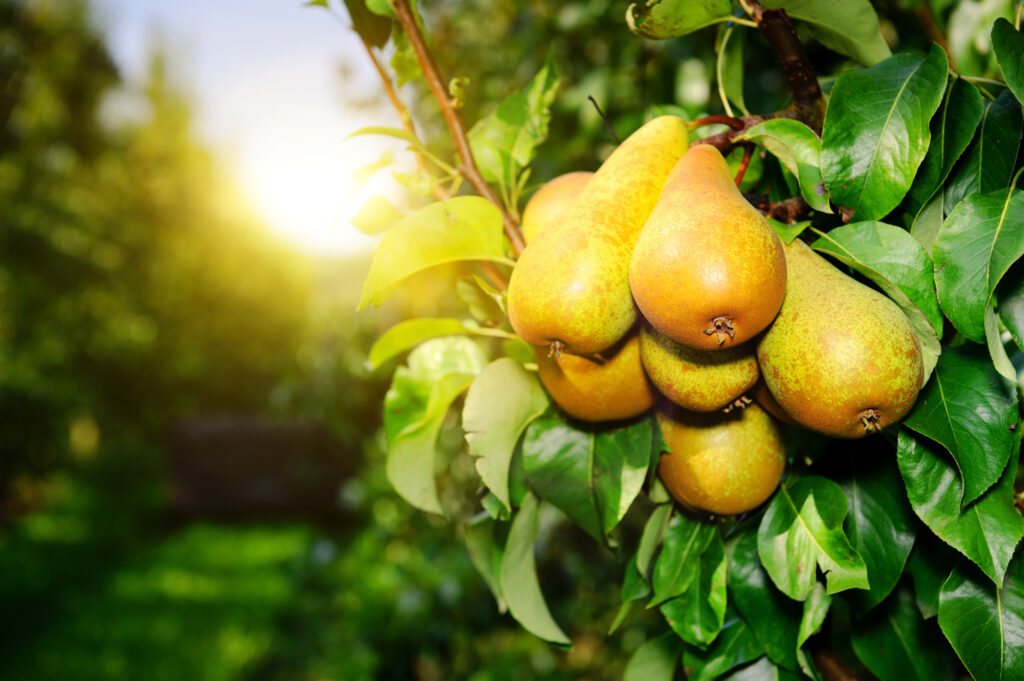
The main reason for mature fruit trees to not flower and not produce fruit relates directly to improper tree vigor. What does this mean? Improper vigor can mean too much or not enough growth. Fruit trees with vigorous growth are putting energy into new and additional foliage at the expense of making flowers and fruit.
What Causes Improper Vigor?
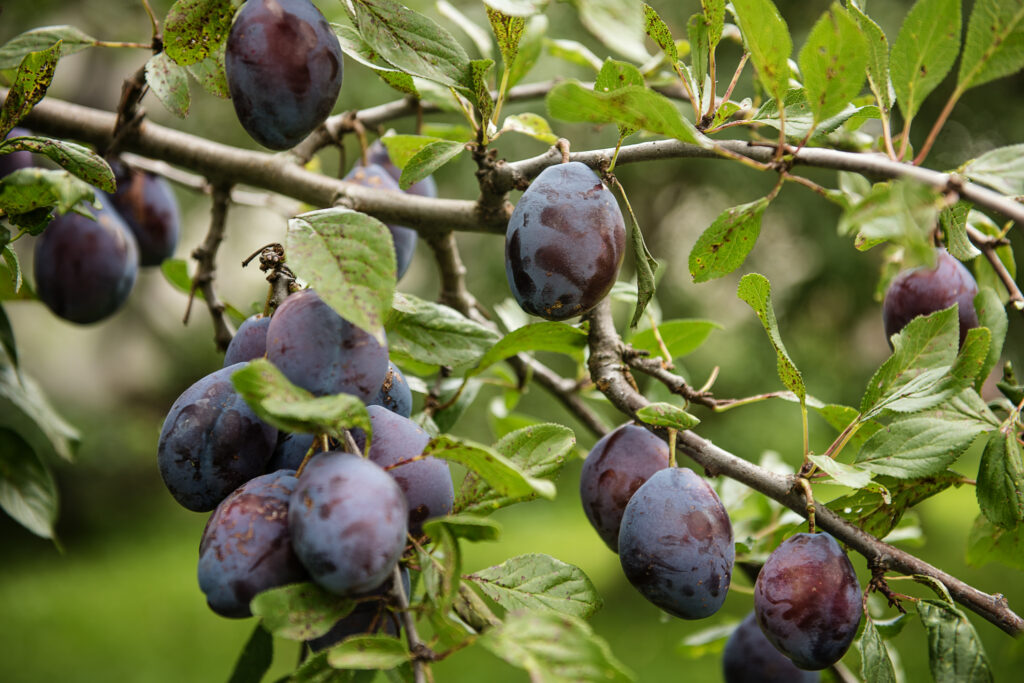
Over-Fertilization
If trees are too big, too fast, over-fertilization might be the issue. Too much nitrogen in the soil creates all leaves and no fruit. Have a soil test done, to know for sure.
Are your fruit trees surrounded by turf/lawn? Does the lawn get fertilized, if so with what? Most lawn fertilizers are quite high in nitrogen.
Rules For Fruit Trees Near Turf/Lawn
- Never use weed & feed fertilizers around your fruit trees! Herbicides in these products damage trees accidentally all the time.
- Create a turf-free zone around the base of trees with mulch, out to just past the dripline of the canopy. This mulched zone will increase each season until the tree has reached its potential size.
Pruning
Heavy pruning and pruning in winter can cause excessive growth.
Non-fruit bearing trees should produce an average of 18 to 30 in. of new growth per year. Trees of bearing age should produce approx. 12 to 18 in. of new growth per year. Trees of either age that produce more than this are either over-fertilized or over pruned.
Thinning
Thinning cuts are those that remove an entire branch back to where it emanates from. It creates less vegetative growth and encourages more flower/fruit production. Always thin out damaged, diseased, and crossing branches annually.

Heading
Heading cuts are those that clip a branch only partway back. Indiscriminate heading cuts will stimulate more vegetative growth and delays proper flowering. Continual heading cuts will totally prevent the flowering of apples and pear trees.
Pruning & Heading Recommendations
Apples, pears, European plums, and cherries perform best when trained as a central leader-shaped tree. The central leader should be headed back each year. This is the one exception for use of the heading cut option.
Peaches, nectarine, Japanese plums, and apricot require both heading and thinning cuts. Perform best when pruned into vase-shaped with no central leader. Their fruits are produced on one-year-old wood.
Other Causes For Trees Not Producing Fruit
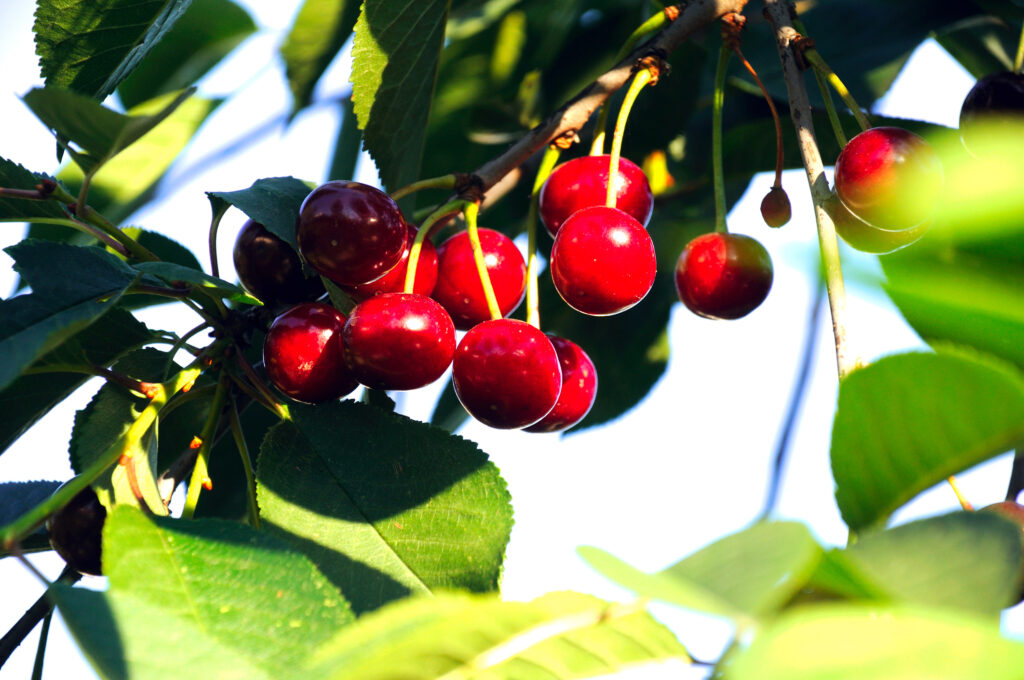
Cold Temperatures
Did you get a late spring frost? Temps. at 29°F or below will damage flower formation. Once flower buds begin to swell and develop there is a risk of frost damage. If there was a frost possibility, wait one day then check blooms. Dark brown-black centers in bloom mean, sadly no fruit that season. Extreme temperatures in mid-winter can also damage bud tissue, and mild temperatures in mid-winter that cause sap to flow, then are followed by rapid dropping temperatures can cause not only fruit problems but can sometimes kill an entire tree, especially young trees. Apricot flower buds are extremely sensitive to late frosts. This should be considered when sight selection is being considered for apricot trees.
Poor Pollination
What pollination partners does your tree require? Plant appropriate pairs of pollinating varieties. Certain varieties are good choices as pollinators other varieties are quite picky about pollination partners, like Honeyberries. If you are not sure, ask!
Bees are the main pollination method, any interference with worker bees, such as rain, cold, wind, or pesticide use will all affect bee activity. A minimum of 3 to 4 bee visits per flower, per day, is required for adequate pollination of most fruit types. Promote healthy garden habitats for all kinds of bees like miner bees, mason bees, bumblebees, carpenter, and leaf-cutter bees.
Pesticide Products
The insecticide Carbaryl (Seven) applied during apple or pear bloom, to one month after bloom will cause the fruit to drop. If Carbaryl is sprayed too frequently or at too high of a rate this can also happen. READ the label.
June Fruit Drop
June drop, as it is commonly known, is a tree’s normal process of shedding fruits it cannot support all the way to harvest. It is disconcerting to first-time fruit and nut growers. This ‘June drop’ is especially common on young and immature trees. This is quite common the first season or two a tree sets fruit. The fruit dropping is associated with increases in summer temperatures, but it is also tied directly to inadequate pollination. It is the most common occurrence in June or July, in the upper Midwest, Northeast, and Northwest depending on the weather, but it is usually consistent in early summer.

How To Avoid June Dropping
To avoid June Dropping is to begin providing supplemental water starting in early summer when the temperature starts to rise and maintain watering through high temperatures and any drought conditions. Be very proactive about self-thinning ⅓ to ½ of all the fruit that the tree sets. Again, this is especially true in young or first season fruit sets. I know, it is exciting to finally see your tree has a bumper crop, but if you choose to do nothing and the tree is not strong enough, it may drop all of that fruit, so you get nothing. It is no guarantee.
Biennial Bearing
There is also a common occurrence of what is called biennial bearing. This pattern typically occurs when the first bumper crop of fruit that is left on a tree to fully mature. If this fruit is allowed to grow to harvest, the tree will continue to only produce fruit every other season, from then on. Biennial fruiting is a difficult cycle to break, once started.
How to Avoid Biennial Bearing
Likewise, the biennial bearing can be avoided by thinning at least ½ of the fruits the first time the tree produces. The reason for this is that fruit trees produce next year’s bud-wood during the fruit ripening period of the current year; hence, if the tree must use all of its energy reserves to bring a bumper crop all the way through to harvest, it will do so at the expense of next year’s crop. The tree must spend the entire following year building back up its energy reserves to flower and fruit again, so this every-other-year fruiting is unwittingly “taught” to your tree by not tinning the fruit. Wait to see what June Drop the tree has first, then you will know how much more fruit if any should be removed. Thinning will help balance the tree’s fruit natural production processes to become more even year to year.
No fruit on sexually mature trees, usually means some combination of issues may exist. Investigate all of the possibilities and make changes where necessary to keep trees as happy and healthy as possible.
Other Fruit Related Articles
- Top Tips For Fruit Trees: Planting, Caring, & Maintenance
- An Easy Guide To Fruit Tree Rootstocks
- Tree Pruning Techniques & Best Practices
- How To Care For Bare Root Plants and Tips For Planting
View Jung Seed Company color catalog online or browse our website for all of your gardening favorites. To receive info on new products, exclusive deals, and specials, be sure to sign up for our weekly email.
